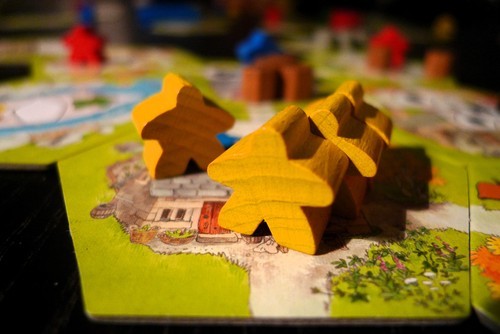Keyflower strategy
 In the board game
Keyflower
, a mechanic of the game is to place workers on a tile to activate the tile's effect. A player that wishes to activate the effect places a number of workers on the tile. If any player wishes to subsequently activate that effect again, they must place more workers than the latest one previously put in. Additionally, a tile may not have more than six workers.
In the board game
Keyflower
, a mechanic of the game is to place workers on a tile to activate the tile's effect. A player that wishes to activate the effect places a number of workers on the tile. If any player wishes to subsequently activate that effect again, they must place more workers than the latest one previously put in. Additionally, a tile may not have more than six workers.
Thus, as an example, a player may place one worker on the tile; another player may subsequently place two more; another player can place three more; after that, there are six workers on the tile, so there cannot be any more use of the tile.
It has been suggested that the rule that "a tile cannot have more than six workers" is reworded to "a player can only place at most three workers on a tile at a time". Are they equivalent, or just strategy-wise equivalent (equivalent if players are playing perfectly), or even not at all? Assume that having extra workers is never a detriment to a player.
- A. They are equivalent.
- B. They are not equivalent, but they are strategy-wise equivalent.
- C. They are not strategy-wise equivalent.
This section requires Javascript.
You are seeing this because something didn't load right. We suggest you, (a) try
refreshing the page, (b) enabling javascript if it is disabled on your browser and,
finally, (c)
loading the
non-javascript version of this page
. We're sorry about the hassle.
They are not equivalent, but they are strategy-wise equivalent.
They are not equivalent, since in the original wording of the rules, a player may put four or more workers at a time (for example, they may put six workers on an empty tile).
However, they are strategy-wise equivalent. Note that whenever a player places three or more workers at a time, that tile is now blocked and no player can place more workers there. This is because if a player wants to do so, they must place four or more workers, but then there would be at least seven workers, breaking the original rule. Thus it's enough to place three workers to block a tile. Since having extra workers is always a good thing, it never makes sense to place more than three workers on a tile at the same time.